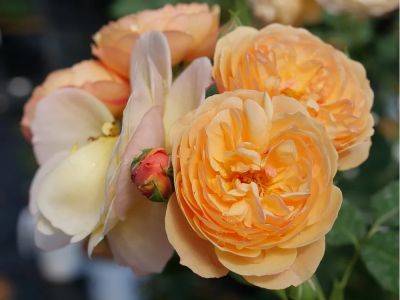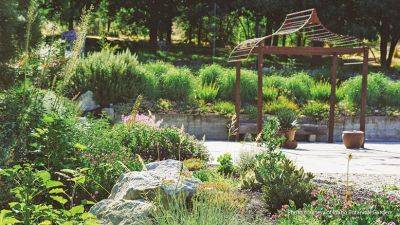Old towels can be used in a variety of ways that can help you in a lot of day-to-day gardening chores to make it really easy for you!
Controlling Animal Pests in the Flower Garden
09.02.2024 - 18:19 / backyardgardener.com
Although insect pests and plant diseases are generally easy to control in the flower garden, animal pests are not. For one, much of our wildlife is protected by law and can’t be indiscriminately eliminated. You may have variable success with repellents, depending on your location or timing. If the animals are not very hungry or population pressures are not too great, repellents may be enough to discourage invaders. But then again, there’s no guarantee that they’ll work.
Animals are intelligent and will learn from experience. If stopped by an electric deer fence or a bulb cage (chicken wire around tulips and other tasty bulbs), they may remember this experience and not try again. Or they may find a new way to get to your flowers or decide to feast on an entirely different variety.
Live traps with release a distance away is another option. However, this may not be the best alternative. For example, you may catch domestic cats. And who wants to deal with an angry skunk? Your community also may have regulations against relocating wild animals. Be sure to know the law before you act.
If trapping large live animals, use caution to prevent being bitten as many carry communicable diseases such as rabies. In Vermont fox and raccoon rabies are both on the rise.
Snap or leg hold traps are banned in most areas, though even if permitted, it is not a good choice as it is a cruel and inhumane way for any animal to die. There’s also a good chance that you could catch a pet or worse, injure a child. Shooting is usually not permitted, and especially not in populated areas.
Poison bait is commonly used for mice and voles. However, before you set a trap, be aware that cats and other animals may be attracted to the trap to feed on the poisoned

Learn How to Grow Citrus Trees Indoors | Gardener's Path
Learn How to Grow Citrus Trees Indoors

How to Pre-Seed the Garden in Fall for an Early Harvest
How to Pre-Seed your Garden in Fall for an Early Spring Harvest

How to Use Straw Mulch in the Vegetable Garden
How to Use Straw Mulch in the Vegetable Garden

How to Grow Ginger Indoors
Ginger Houseplant Care Tips: How to Grow Ginger Indoors Zingiber officinale

In the Garden: New roses present tasty possibilities
Reviews and recommendations are unbiased and products are independently selected. Postmedia may earn an affiliate commission from purchases made through links on this page.

Must-See Public Gardens to Visit in the U.S.
Must-See Public Gardens to Visit in the U.S. Whether they're around the corner or across the country, public gardens are worth the trip! Don't miss these impressive public gardens!

February 19 Week 3 Garden Photos
“As Barbara has injured her ankle and can’t get out to photograph, please enjoy a review of some of her favorite photo blogs. ~ Part 4 ~ ”

Scaring sparrows with stuffed cats and other antideluvian gardening advice
If we could step back in time to flick through the pages of popular garden magazines from bygone eras, it’s safe to say that we’d find few if any features on rewilding, sustainability, environmentally conscious garden design or the rich biodiversity of brownfield sites. Instead, those popular publications typically dispensed traditional gardening advice on how to cultivate a range of choice plants and protect them from common pests and diseases. Some of it, unsurprisingly, hasn’t aged all that well.

Sarah P. Duke Gardens
Sarah P. Duke Gardens Stroll through the Sarah P. Duke Gardens to discover colorful seasonal plantings, a prairie garden and fruits and vegetables that grow well in the South. Sarah P. Duke Gardens Durham, North Carolina

Greater Des Moines Botanical Garden
Greater Des Moines Botanical Garden Don't miss out on the Greater Des Moines Botanical Garden's colorful borders, beautiful roses, out-of-the-ordinary conifers and so much more! The Greater Des Moines Botanical Garden Des Moines, Iowa

Idaho Botanical Garden
Idaho Botanical Garden If gardening in a dry climate is your challenge, the Idaho Botanical Garden has lots of solutions! Idaho Botanical Garden Boise, Idaho
